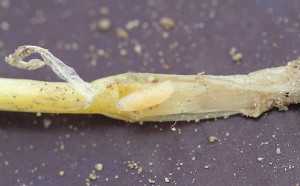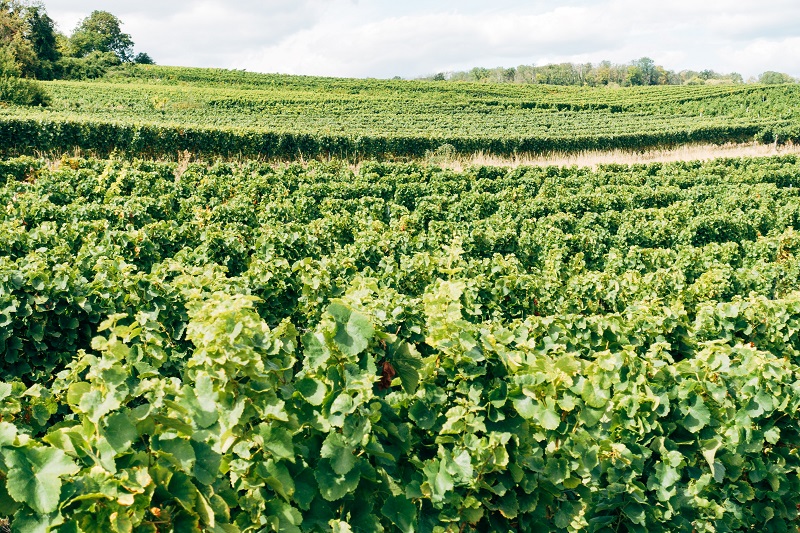Avoid The Scorn Of Seedcorn Maggots

Photo by Whitney Cranshaw, Colorado State University
Pest Specs
The seedcorn maggot (Delia platura Meigen) or bean seed fly is a small fly closely related to the cabbage maggot and the onion maggot. It is a sporadic pest on germinating seeds of corn and many other agronomic and horticultural plants.
Identification
The pest is cosmopolitan occurring on all continents except Antarctica. Seedcorn maggots damage newly planted seeds by feeding on seed contents, often leaving empty seed shells and preventing germination. Seedlings that germinate despite the damage are spindly, with few leaves, and die before maturation. Usually a small percentage of the seedlings get infested by this insect. But in severe cases, as much 30% to 60% plant loss may occur in the field.
The adult seed corn maggot is a brownish-gray fly with three stripes on its back. They resemble a small house fly but are about half the size and hold their wings crossed over the abdomen at rest.
The legless larvae maggots are dirty white with a yellow tint, legless, cylindrical, and tapered in shape. Fully grown maggots are about ¼-inch long and have a pointed head with two black mouth hooks. The abdomen is blunt with two brown to black spiracles at the posterior end.
This pest is associated with organic matter such as manure and plant residues. Seedcorn maggot activity increases during years when conditions are cool and damp and seeds germinate slowly. They may be more common in reduced-tillage systems as the decaying organic matter from crop residues is an ideal ovipositional site for the insect.
Survival And Spread
The flies mate within a few days after emerging, and each female lays an average 270 eggs in soil high in decaying organic matter and/or on seeds or plantlets in moist soil. Females lay eggs near food sources and tend to deposit more eggs near the base of newly emerged seedlings. The eggs are white, deposited in loose groups among organic debris and around plant stems near the soil surface.
The larval period lasts nearly 21 days and the maggots develop over a wide temperature range. They complete their entire development within the soil by burrowing into and feeding on seeds or emerging cotyledons. Larvae also can survive as soil saprophytes.
The insect can pass through up to five generations per year in the South, and adults are common in the fall, early winter, and spring seasons. However, few are seen in mid-summer as they appear to be intolerant of high temperatures. Since much of the life cycle is spent protected underground, the seedcorn maggot does not appear to have many natural enemies.
Management Methods
Preventative measures include late planting, shallow planting, higher seeding rates, well-prepared seedbed, and turning undercover crops early, which renders fields less attractive to egg laying.
Insecticidal seed treatment is the cheapest and most effective treatment for the control of seedcorn maggots. Granular insecticides also can be used for control.
Consult UF/IFAS recommendations for currently labeled insecticides for seedcorn maggot control.










